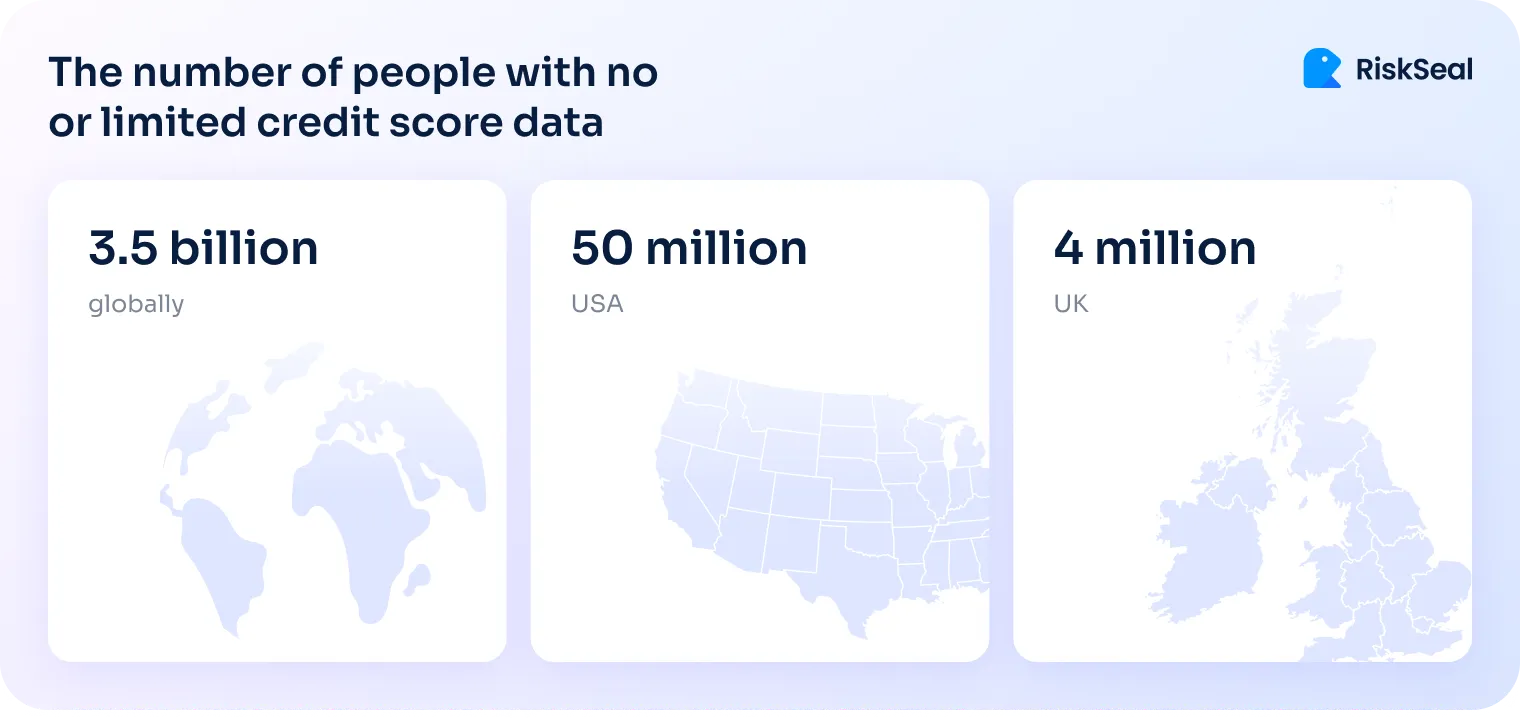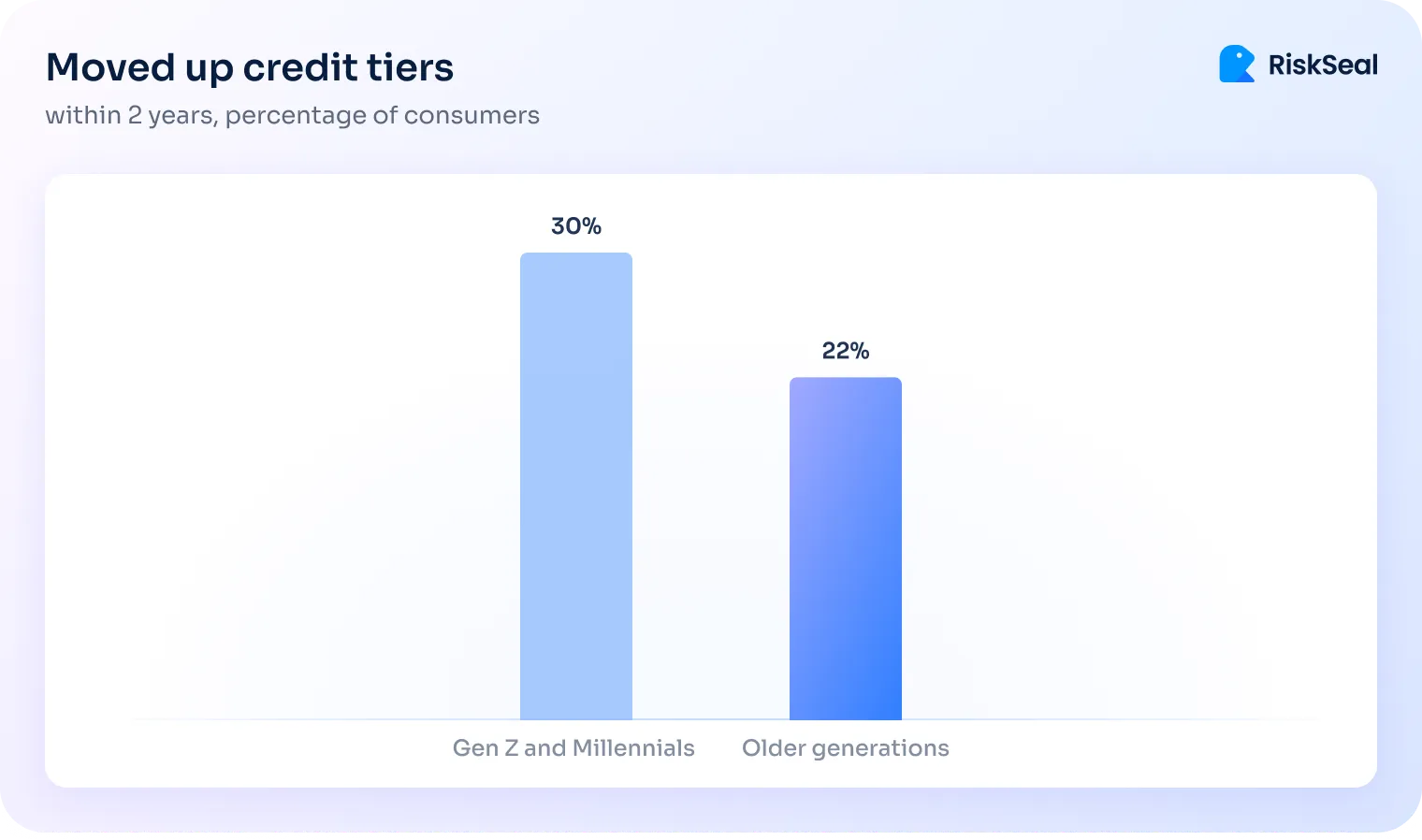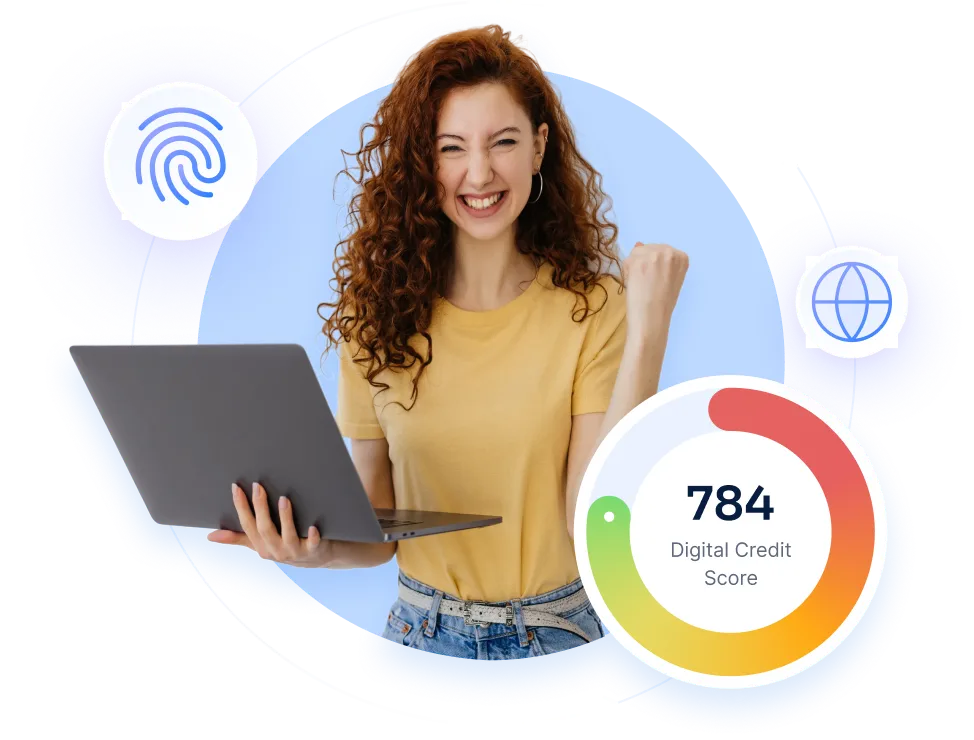Explore the data gap behind credit invisibility and how to close it with smarter scoring.
.webp)
In the U.S., 28 million people are considered credit invisible. At the same time, 331 million people out of 340 use the internet, which means almost everyone leaves behind a digital footprint.
Digital footprint AI analysis can help lenders understand how people manage their money. Even if they’ve never used a credit card or taken out a loan.
This article will show how alternative credit scoring makes these invisible borrowers visible. And, how it can help lenders make smarter decisions and grow their revenue.
Often grouped, credit invisible and unscorable reflect different challenges in accessing credit.

Credit invisible individuals have no credit history, so they don’t appear in traditional credit scoring systems.
Credit invisible borrowers usually include:
In contrast, unscorable applicants have a credit file, but it’s too limited or outdated to produce a reliable score.
This category may include:
Certain careers often leave people unseen by credit systems, even when they manage money well.
Both groups are often locked out of traditional lending, even if they’re financially responsible.
This isn’t a risk issue; it’s a clear data gap. Traditional scoring overlooks good borrowers only because they’re lacking traditional bureau data.
Young people are entering the financial system with new habits, but traditional credit models haven’t caught up.
Take Millennials, for example.
As reported, 79% of them actively try to increase their credit scores. Also, 98% of Millennials regularly use mobile banking apps to view account balances, track repayment, and check their credit score.
This behavior reflects strong financial discipline, even without full credit histories.
In the U.S., Millennials and Gen Z have lower average credit scores, 690 and 680, respectively, compared to the average of 715. This highlights a clear generational gap.

Financial tendencies of both these generations often leave less data in traditional credit systems, as they choose to:
These choices don’t reflect irresponsibility, but a different way of managing money. Many young borrowers handle their finances well, yet traditional credit checks don’t capture it.
Using data from over 4 million U.S. consumers, it was found that 30% of millennials and Gen Z’s with thin credit files moved up a credit tier in two years, compared to 22% of older generations.

Younger applicants may be less traceable, but that doesn’t mean they should be denied credit access. Lenders need to adapt and start evaluating people fairly.
Even without a full credit history, a person’s digital footprint helps lenders assess trustworthiness.
Platforms that use alternative data sources, like RiskSeal, rely on a variety of digital signals to generate a more complete credit scoring model for clients.
Alternative data scoring adds extra context to traditional checks. It’s not meant to replace them, but to make them more complete.
These signals give lenders a clearer picture beyond the credit bureau, helping them make fair decisions.
Adopting a new credit risk tool doesn’t have to be complex. RiskSeal makes it easy to get started, so you can better serve credit-invisible customers from day one.
During this session, our experts walk you through the platform’s capabilities, showing exactly how it can:

To prove its value for your needs, RiskSeal offers a free Proof of Concept (PoC) using your actual data.
This hands-on trial allows you to:
RiskSeal helps you fully integrate its scoring API into your decision-making systems.
This includes:
RiskSeal isn’t just a tool, it’s a long-term partner.
After go-live, we’ll provide your risk assessment team with:
RiskSeal’s implementation strategy is built around speed, simplicity, and measurable results.
From personalized demo to full deployment, every step is designed to help your team move fast, with confidence.
Book your custom demo today.
It’s time to rethink how fintechs recognize valuable clients, with many being missed for the wrong reasons.
Credit invisibility doesn’t equal high risk, and traditional models no longer tell the whole story. Alternative data helps lenders make smarter, fairer decisions with a fuller view of each applicant.
Want to find out how RiskSeal helps lenders balance thin files and security? Contact us for a demo.

Download Your Free Resource
Get a practical, easy-to-use reference packed with insights you can apply right away.

Download Your Free Resource
Get a practical, easy-to-use reference packed with insights you can apply right away.




What does it mean to be “credit invisible,” and why might that label be misleading?

Being “credit invisible” means someone doesn’t have enough information in their credit report or they’re not in the system at all.
This label can be misleading because it doesn’t reflect how someone actually handles money.
Many credit-invisible people pay rent, bills, and subscriptions on time, use budgeting tools, and avoid debt. Just because they don’t use credit products doesn’t mean they’re financially irresponsible.
Why can't traditional credit models see customer creditworthiness in so many people?

Traditional credit models rely on past borrowing behavior to assess someone’s risk.
But many people don’t use credit the same way. Younger generations and non-traditional workers may use debit cards, manage money with apps, and avoid taking out loans.
As a result, they appear “invisible” to traditional models, even though they manage their finances well every day.
Why could ignoring alternative data cause lenders to miss out on high creditworthiness?

If lenders focus only on credit scores, they risk missing a large group of low-risk, responsible borrowers.
Alternative data can reveal who’s trustworthy, even without a long credit history.
Ignoring this information means turning away people who are likely to repay, simply because they don’t fit the old mold. Over time, this could lead to missed opportunities with some promising customers.